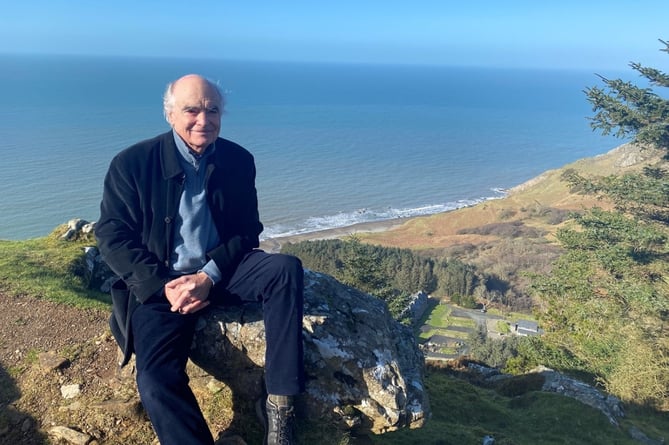Dr Carl Clowes, founder of the Nant Gwrtheyrn trust who restored the abandoned village of Nant Gwrtheyrn, Pwllheli, to establish a Welsh language centre, will be remembered at the Eisteddfod later today.
This is the first Eisteddfod since Clowes’ passing in 2021, and a special event has been organised to honour his life and work.
Cofio Carl will be a discussion between Dafydd Iwan, Alun Jones and Francesca Sciarrillo, the Italian woman named Welsh Learner of the Year at the Urdd Eisteddfod in 2019.
Clowes was born and brought up in Manchester, and despite his mother being Welsh and being able to speak Welsh, it wasn’t until his parents returned to north Wales that he started to learn the language.
His eight years spent as a doctor in the Llŷn village of Llanaelhaearn shaped his social principles, and inspired him to become the first ever chairman of Antur Aelhaearn; the first Community Co-operative in the United Kingdom established to save the local school.
But there is little doubt that Clowes’ most notable achievement was the founding of Ymddiriedolaeth Nant Gwrtheyrn, that gave new life to the then uninhibited village of Porth y Nant.
The former quarry village of Porth y Nant and the granite quarry of Nant Gwrtheyrn, opened in 1861, existed side-by-side. But, following the closure of the quarry during World War II, and the eventual dispersal of the village’s inhabitants, the settlements fell into disrepair. Finally, in 1948 Nant Gwrtheyrn school closed its doors for the last time, and the last nail was hammered into the village’s coffin in 1959, when the last family left Nant, leaving the village empty.
The village does have one very colourful but short-lived chapter in its existence, when it was occupied by the New Atlantis Commune of hippies during the 1970s. They lived there without any water supply, electricity, or a sewerage system, causing damage by burning floors and doors and covering the walls with graffiti.
But the legendary Welsh pop group Ac Eraill’s song Cwm Nantgwrtheyn attests to the fact that the village was destined for a revival, and by now it houses a Welsh language learning centre, a heritage centre, conference facilities, 4-star accommodation, and a café.
Wales was reminded of Clowes’ immense legacy when he sadly died late last year after a short illness. He was 77 years old.
Upon his death, Huw Jones the current chairman of the Nant Gwrtheyrn Trust, said Wales had lost “one of the greatest benefactors of the Welsh language”.
“Nant was a symbol of the decline of a nation, a community, and a language. But it eventually became a powerful symbol of their revival. All learners and visitors to Nant Gwrtheyrn will have a place to thank him for decades to come. Our loss as a Trust is immeasurable.”
But this year’s Eisteddfod will give visitors a chance to celebrate the legacy of Carl Clowes. Huw Jones said: “Looking at Nant Gwrtheyrn in its current, successful form, it’s easy to forget that it used to be a village of ruins and despair at the beginning of the 70s. Carl Clowes’ vision of giving it new life by turning it into a language centre gave the nation hope.
“It started an effort that lasted years, before finally realising the dream.
“Cofio Carl is an opportunity to remember Carl Clowes’ monumental contribution to the challenge of promoting the language and maintaining rural life.”
Cofio Carl will be appropriately held at Pentre’ Dysgu Cymraeg (The Welsh Learning Village) on the Eisteddfod’s Maes at Tregaron at 12m today, Monday, 1 August.




